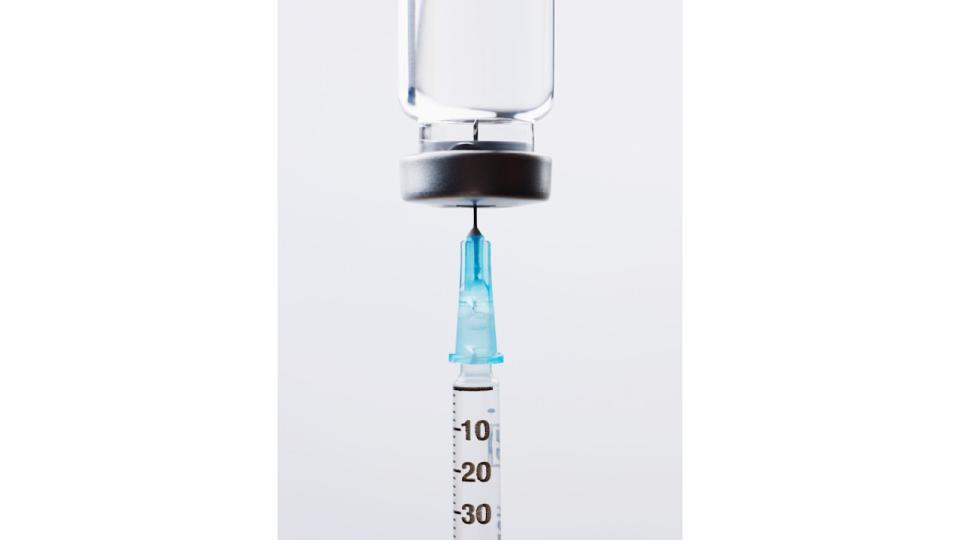'Ozempic Face': The new cosmetic concern you should be aware of

Injectable medication semaglutide, better known by the brand names WeGovy and Ozempic, was developed to help manage Type 2 diabetes, but it’s dominated headlines because of its dramatic weight loss effect and droves of celebrity fans.
Oprah, Sharon Osbourne and Rebel Wilson have all spoken candidly about the benefits, but whisperings about so-called 'Ozempic Face' took off after the effects of rapid weight loss began to show on some celebrity faces, leaving them looking drawn and gaunt.
"After extreme weight loss, skin can see reduced levels of elastic and collagen," explains aesthetic surgeon and founder of Dr Glyn MediSpa, Dr Glyn Estebanez. "Both are essential components for the structural integrity of the face and without it we see increased signs of ageing like sagging skin and wrinkling. A significant loss of volume in the face can also make facial features appear more pronounced," says Dr Glyn.
"My lower face and neck looks droopy now and I still have some stubborn pockets of fat, so I’m looking for treatments to sort this out"
WeGovy user Amelia has been taking the drug for 8 weeks and lost 10% of her body weight, but was struck with how quickly her facial appearance changed: "My lower face and neck looks droopy now and I still have some stubborn pockets of fat, so I’m looking for treatments to sort this out," she tells me.
"There are several non-surgical ways to treat ‘Ozempic Face’," says Dr Salenna Zimri, founder of Skin Doctor Clinics, "From skin regenerating lasers to precise filler placement." This aesthetic concern is now being addressed by doctors through innovative skin tightening procedures, restoring patients' confidence and appearance.

There are treatments that have skyrocketed as a result, including ultrasound therapy, and advanced dermal fillers. The growing popularity of these treatments highlight the medical community's response to addressing the unique challenges posed by 'Ozempic epidemic'. While we don't endorse the use of Ozempic, we recognise that concerns about sagging skin are widespread beyond this issue. If you're worried about skin laxicity or simply curious about available options, we've compiled a list of the most popular and effective treatments on the market right now...
Thermal Lifting
Sofwave is a needle-free, non-invasive skin treatment that gives an instant lifting effect. "The device is placed on the face and delivers ultrasound waves to the mid-dermis layer of the skin," says Dr Saleena. These microscopic vibrations create controlled, precise thermal injuries 1.5mm under the skin’s surface to stimulate the body’s natural healing response. Although it’s non-invasive, patients can feel significant heat on the skin, which is minimised by numbing cream. “The heat generated by the energy also triggers the production of new collagen and elastin fibres, which help to tighten and firm the skin over time,” Saleena tells us. Expect to see improvements in skin texture and firmness, and a lifting effect, over 12 weeks and results can last up to a year.
Sessions start from £1295 up to £2500 for full face and neck. Skin Doctor Clinics
Sculpting Injectables
"After significant fat loss we focus on replacing volume where it’s needed," says Dr Glyn. This is done with carefully injected soft tissue hyaluronic acid fillers like Juvéderm or Restylane. "These plump the skin and support areas like the cheek and tear trough, to give skin a smoother, even-toned appearance."
Particular types of filler, including Sculptra and Ellanse, contain ingredients to stimulate skin’s natural collagen production. And sometimes taking a two-pronged approach to sagging skin by combining fillers with collagen synthesising ingredients is necessary for the most natural result. "Bio-stimulators don’t volumise the face instantly, unlike traditional fillers," says Dr Saleena. "Instead, they stimulate fibroblasts in our skin to produce more collagen. This improves the quality of skin and helps with laxity." It’s not a permanent solution but many people will notice results lasting 12-24 months.
Prices start from £340 per treatment. Prima Aesthetics
Stimulating Collagen
Some are addressing the side effects of rapid weight loss with non-surgical treatments like Exion. Combining radio-frequency and targeted ultrasound in one, "this non-invasive technology targets skin laxity by gently heating problem areas to stimulate the skin’s natural collagen, hyaluronic acid and elastin production - key components for plump, healthy-looking skin," explains aesthetic doctor, Dr Wassim Taktouk.
A comfortable treatment with zero downtime, Exion is used on the face and body to tighten and rejuvenate sagging skin. Much like Sofwave, Exion utilises heat from ultrasound waves to induce thermal injury on the skin’s underlying tissues but it differs slightly by incorporating radiofrequency energy adding further micro-injuries to the dermis. Skin is left plumped, smoothed and significantly tighter. Benefits are noticeable from three months post-treatment but a course of 3-6 sessions is recommended to see maximum results.
Prices start from £300 per session. Dr Wassim Taktouk


